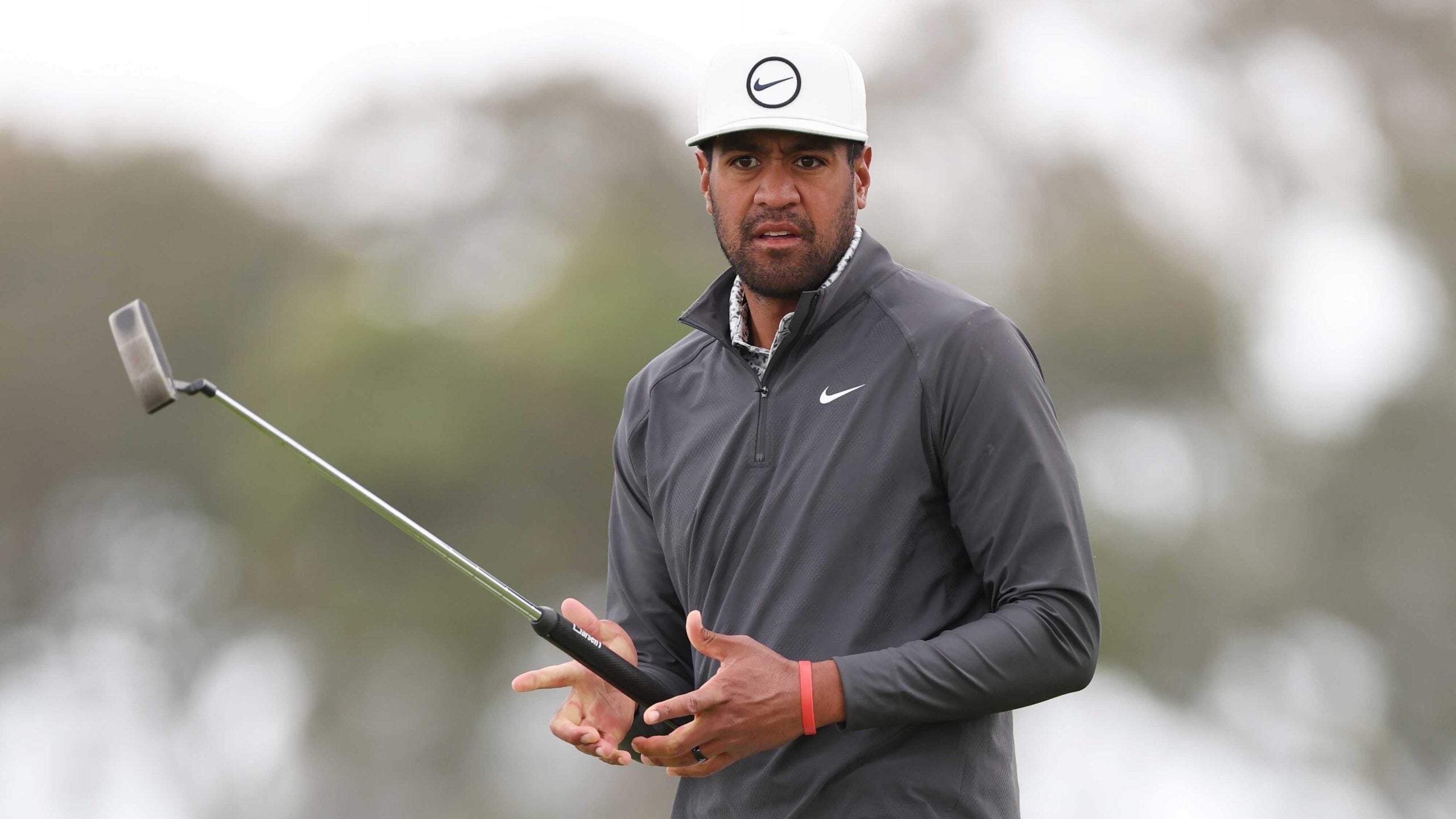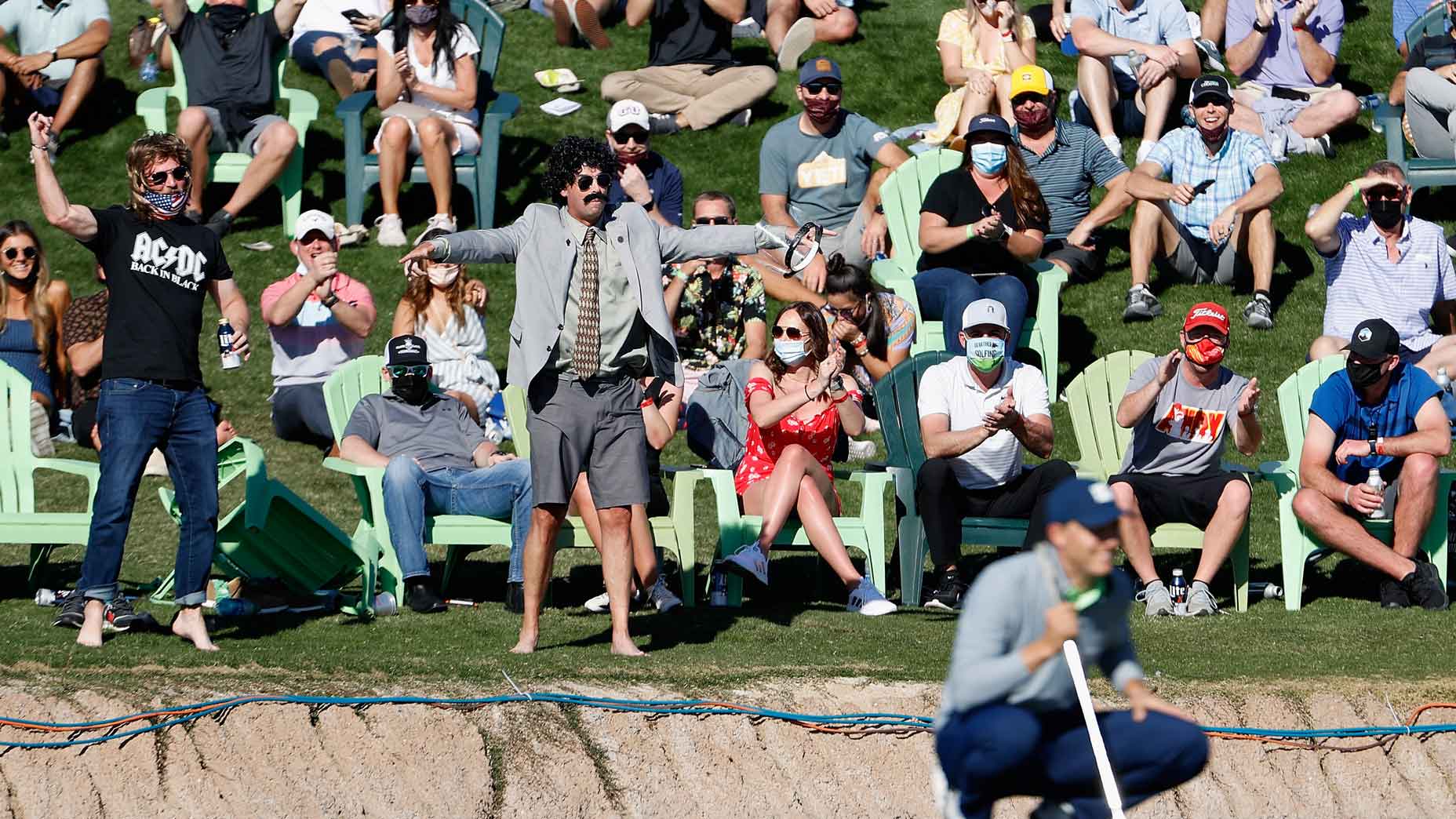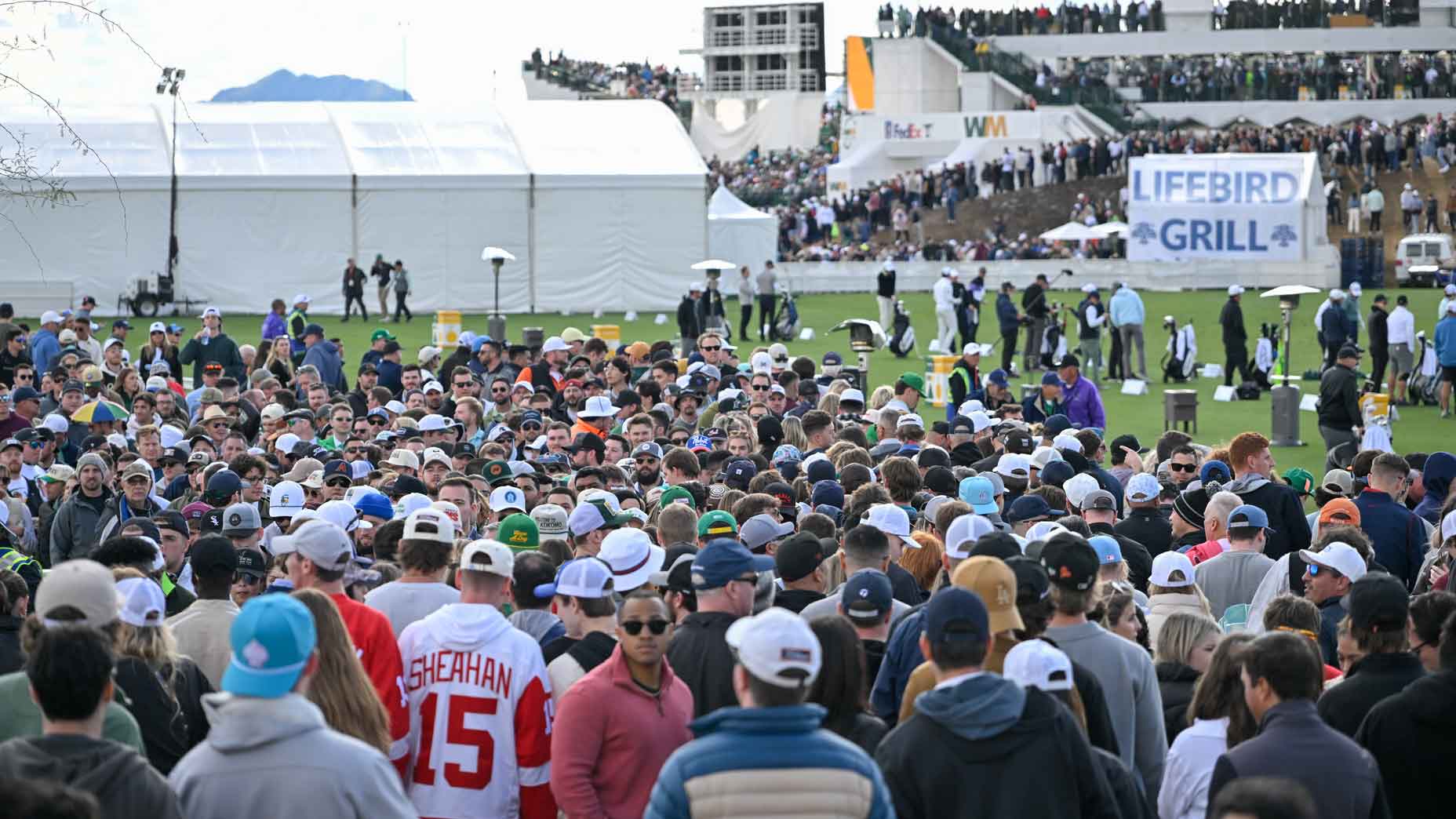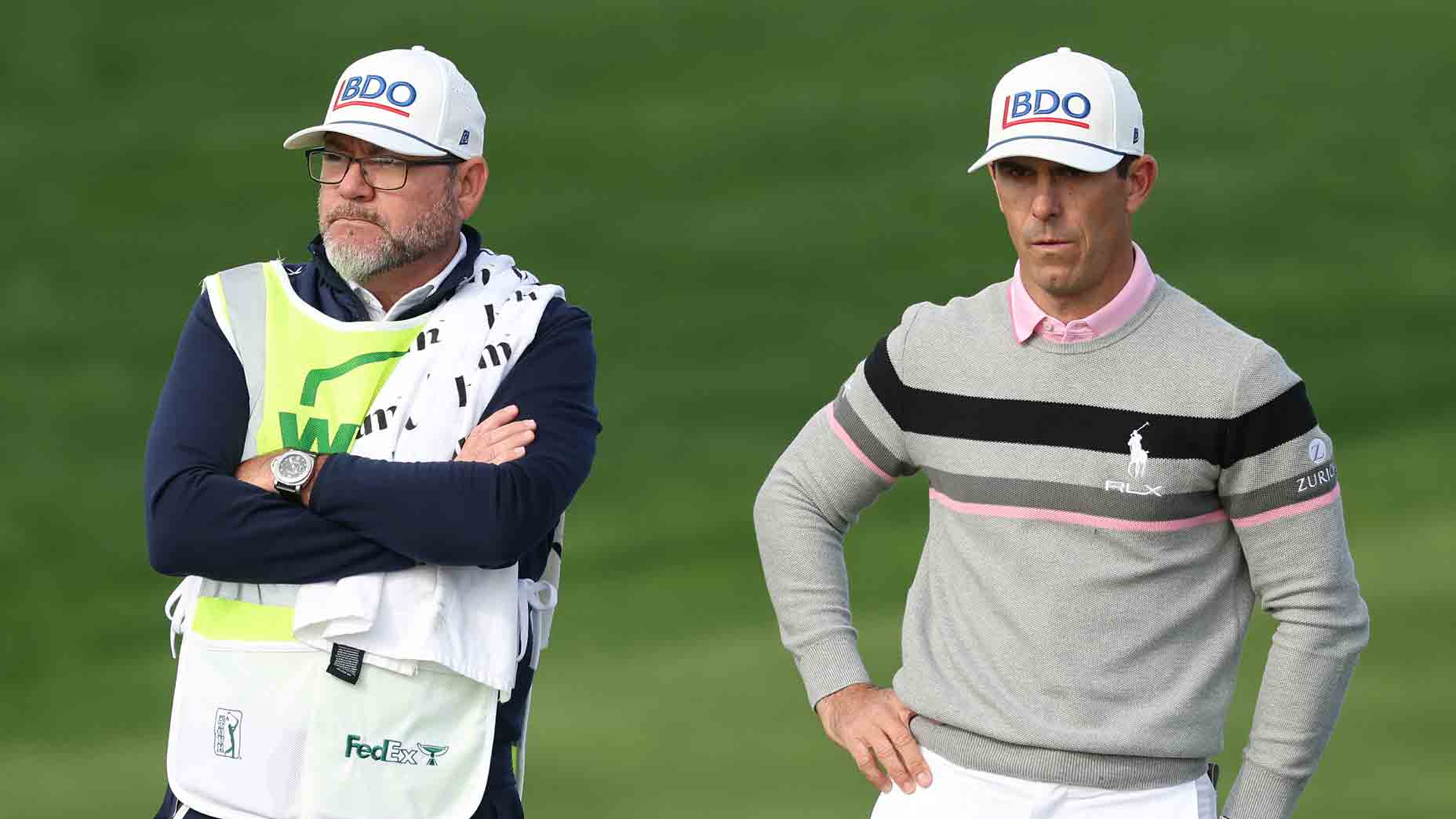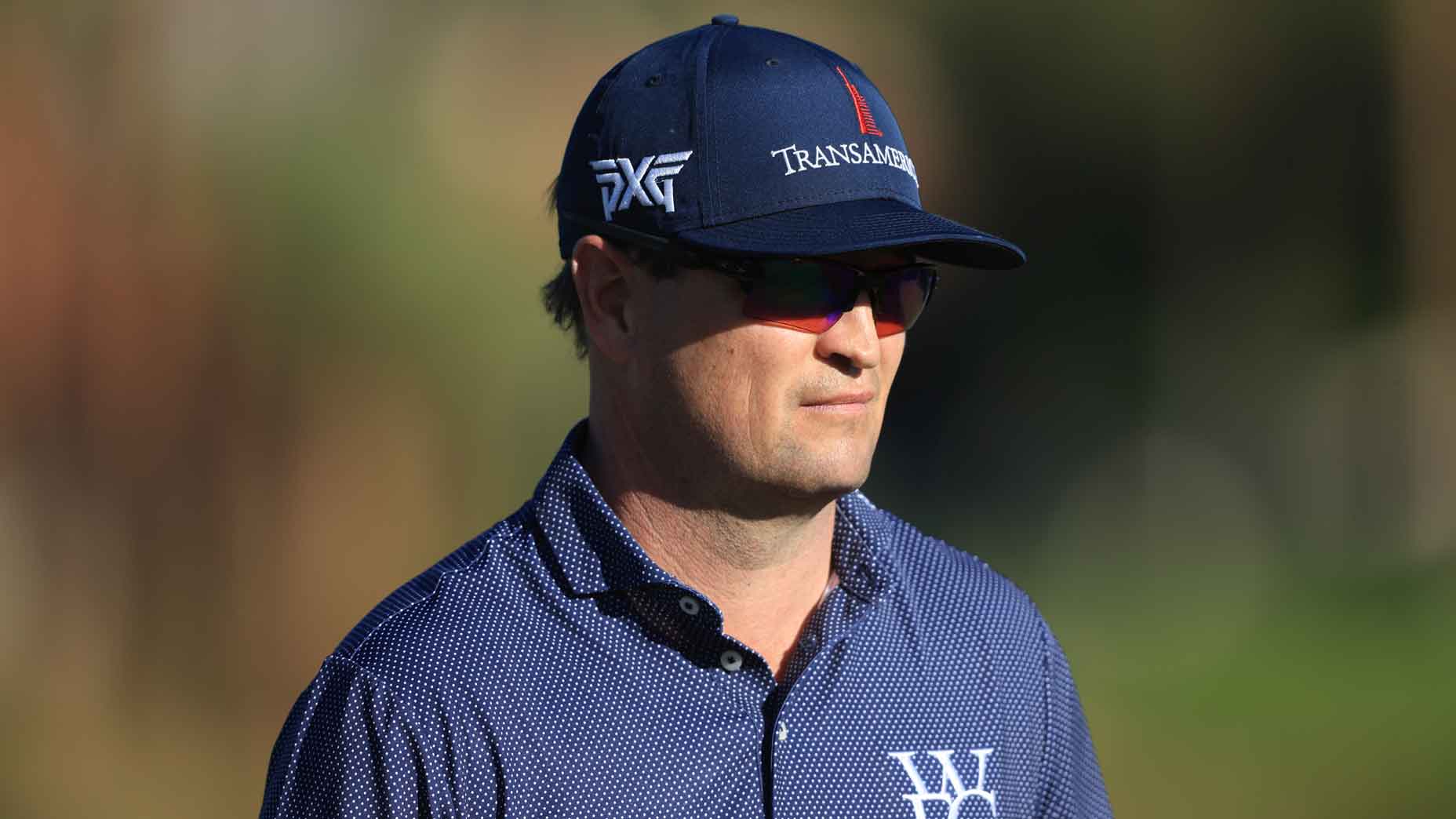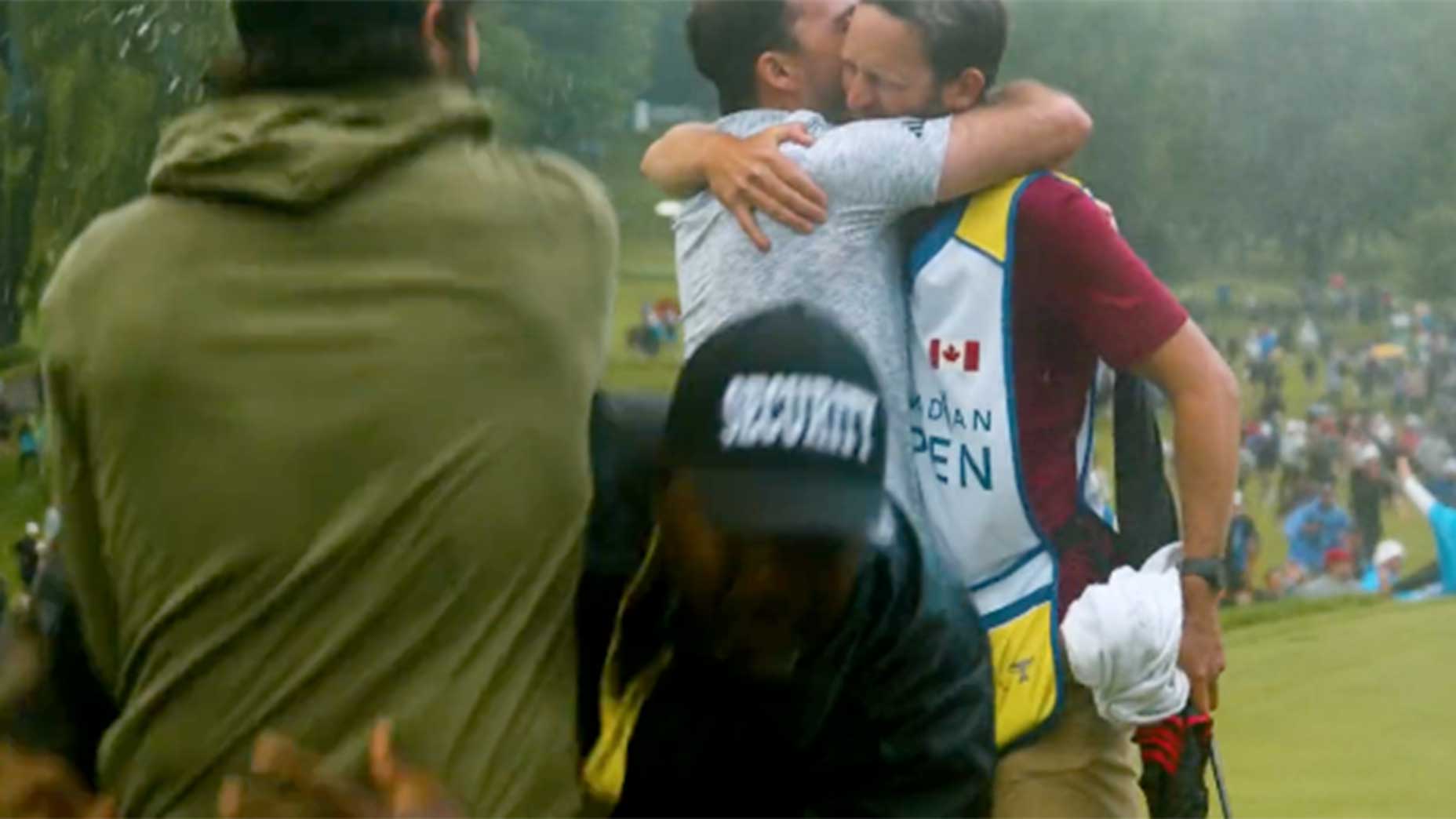Why Patrick Cantlay ignores this conventional course-strategy advice (and you should, too)

Patrick Cantlay at the American Express earlier this year.
getty images
Patrick Cantlay isn’t what you’d call flashy.
He doesn’t emote much. His style runs conservative. He has Goldman Sachs plastered across his hat. And you won’t soon catch him doing a mid-tournament walk-and-talk interview on CBS, like a couple of his peers have done in recent weeks. “I just want to focus on the golf while I’m out there,” Cantlay said Tuesday from the WM Phoenix Open, where he is making his third start of 2023.
But please don’t apply the b-word to Cantlay, because Patty Ice is not boring. He is, in fact, a thinker, and an underrated talker.
Take his Tuesday session with the media, in which he explained his switch to heavier shafts (“went up 10 grams in weight, and it seems to have really taken that left shot out of play); mused on the preponderance of playoffs in recent WMPOs (“statistical anomaly”); and reflected on a book that has had a profound influence on his golfing mindset: the international best-seller “Thinking, Fast and Slow,” by psychologist Daniel Kahneman (“a lot of thinking fast and slow is trying to overcome your inherent bias, and that’s golf all day, right, because your emotions are playing tricks with you, and you feel like certain shots are more important than others when in reality they’re maybe not”).
Then there’s Cantlay’s approach to playing par-5s, and this is where things got really interesting. Cantlay, a reporter in attendance noted, led the PGA Tour in par-5 scoring in the 2021-22 season, with a gaudy 4.41 average. What, the pro was asked, is his secret?
“A good question,” Cantlay said.
Cantlay is a SoCal kid. As a high school senior, he won the California state championship before going on to star at UCLA. His coach, Jamie Mulligan, runs the show at Virginia Country Club, in Long Beach, where he keeps an eye not only on Cantlay but also the likes of Paul Goydos, John Cook and Luke List. Virginia CC is an excellent environment in which to be a good player, because you’re surrounded by other good players. As Cantlay was coming up the ranks, he could absorb wisdom from pros who had already blazed the same path he was trying to go down.
Which brings us back to par-5 strategy.
Not all that long ago, most pros would have told you that if you can’t reach a par-5 green in two, you should lay up to a comfortable wedge distance, be that 75 yards, or 90 or 110. But then along came strokes gained and ShotLink and, well, conventional thinking changed.
“I almost don’t ever think of laying up to a number, which is how I learned how to do it from John Cook and the guys that mentored me when I was growing up,” Cantlay said. “Now it’s can I get the right angle to whatever hole location it is, and can I get it up there as far as possible and then hopefully in the fairway so I can get some spin on it and control the golf ball and get it around the hole?”
In short: smash it in the right direction, go find it, make birdie.
“I’m trying to get up as far as I can, even if I’m not going to get to the green, and then also leave myself the proper angle,” he said. To do that, Cantlay said, it’s essential to find the fairway off the tee, “and then really studying the hole location and leaving your golf ball in the correct spot.
“That’s doing a lot of the right prep work in practice rounds and really studying the individual hole locations and then figuring out where I think I would get up-and-down from the most, and then if I can hit the fairway quite a bit, then I can move my golf ball into the right general area, and I should have a good look at getting up-and-down. … Since they came out with Shot Tracker and strokes gained, I think everyone has maybe been surprised at how much better you get just the closer you get to the hole.”
And not just Tour pros. In his 2014 book “Every Shot Counts,” golf analytics whiz Mark Broadie, who masterminded strokes gained, made the statistical case for golfers of all breeds to take Cantlay’s approach to par-5s. After studying reams of real-player data, Broadie deduced that golfers, regardless of ability, have a better chance of getting up-and-down from, say, 50 yards (even from awkward lies or bad angles) than they do from 100. So on most par-5s, the soundest second-shot strategy is simple: hit it hard.
Nothing boring about that.

